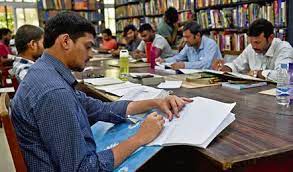This article is a continuation of the previous one, which focused on the Jai Telangana Movement (1969-1970), which is one of the important topics for government recruitment exams. Following the convention’s resounding success, Telangana’s aspirations skyrocketed. It was brainstorming time for the elders to figure out how to survive.
This article is a continuation of the previous one, which focused on the Jai Telangana Movement (1969-1970), which is one of the important topics for government recruitment exams.
Following the convention’s resounding success, Telangana’s aspirations skyrocketed. It was time for the elders to think about how to keep the spirit alive among the youth and how to move the movement forward. Finally, the elders decided to rename the People’s Convention ‘Telangana Praja Samithi,’ and Madan Mohan became its first president on March 25. He was in charge of a 25-person executive committee.
Under the leadership of KR Amos, the employee leader, a Joint Action Committee of Employees and Teachers was formed. They made the decision to collaborate with TPS and the Students Action Committee. On June 7, approximately 2.5 lakh workers in the twin cities went on strike for one day in protest of the three days of unrest caused by police firings. Workers from all Telangana districts gathered in Hyderabad to form an action committee. Govind Singh was elected as the organization’s president. Due to the workers’ strike, most factories were closed that day.
The Telangana NGOs union announced that their indefinite strike would begin on June 10. They went on strike for another 37 days. Teachers’ unions have also declared that they will go on strike as soon as the schools reopen. Telangana Praja Samithi and the Telangana Students Action Committee have jointly called for Telangana bandh on June 16 to protest the draconian rule. The government was outraged by the bandh call and fired 29 teachers union leaders. P Ramabramham, Balakrishna Reddy, and Narasimha Reddy were among them. The bandh on June 16th was a huge success.
The Telangana leaders were summoned to Delhi, and the Prime Minister met with them, but no tangible results were produced. As a result, people came out of the woodwork in large numbers, and the satyagrahas and dharnas continued.
On July 12, Telangana celebrated Flag Day. On July 16, the 37-day-long TNGOs strike was called off. It has become clear that the employees’ political struggles have their own limitations, and they cannot support their families for an extended period of time without pay. On July 23, Osmania University employees called off their strike as well. Sridhar Reddy, who had been living undercover for several months, was apprehended on August 3 and taken to Rajahmundry Central Jail.
Participation of women
Women’s participation in the Telangana Movement in 1969 was notable. Rani Kumudini Nayak, Mayor of the Municipal Corporation of the twin cities, MLAs TN Sadalaxmi, J Eswari Bai, Santha Bai, Sumitra Devi, Parliament member Sangam Laxmi Bai, and Roda Mistry were among those honoured. On August 6, 53 people were arrested in Hyderabad during a sit-in strike. There were 38 young ladies among the 53 people. Similarly, women took part in the agitation enthusiastically and in large numbers.







